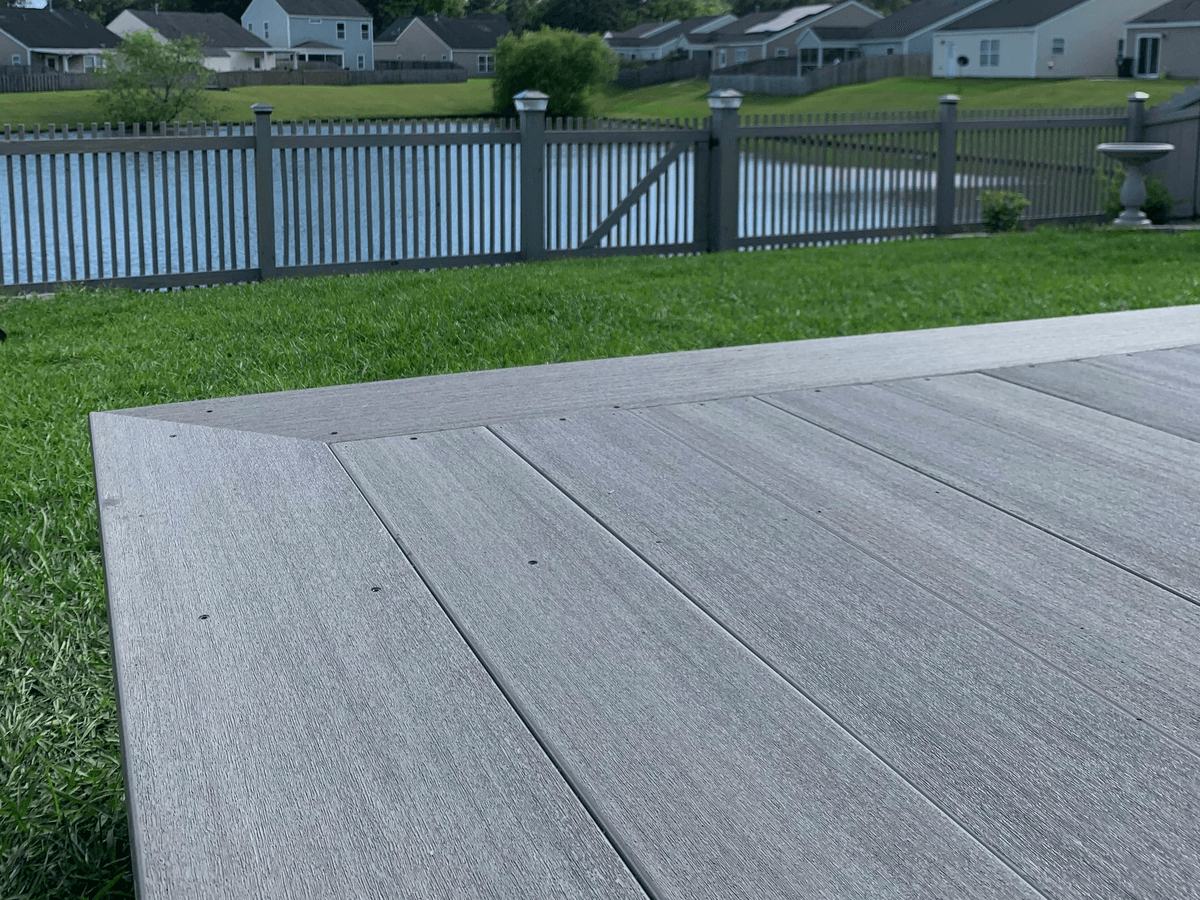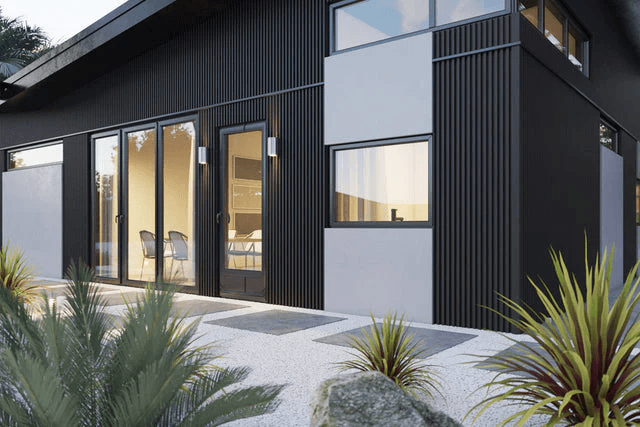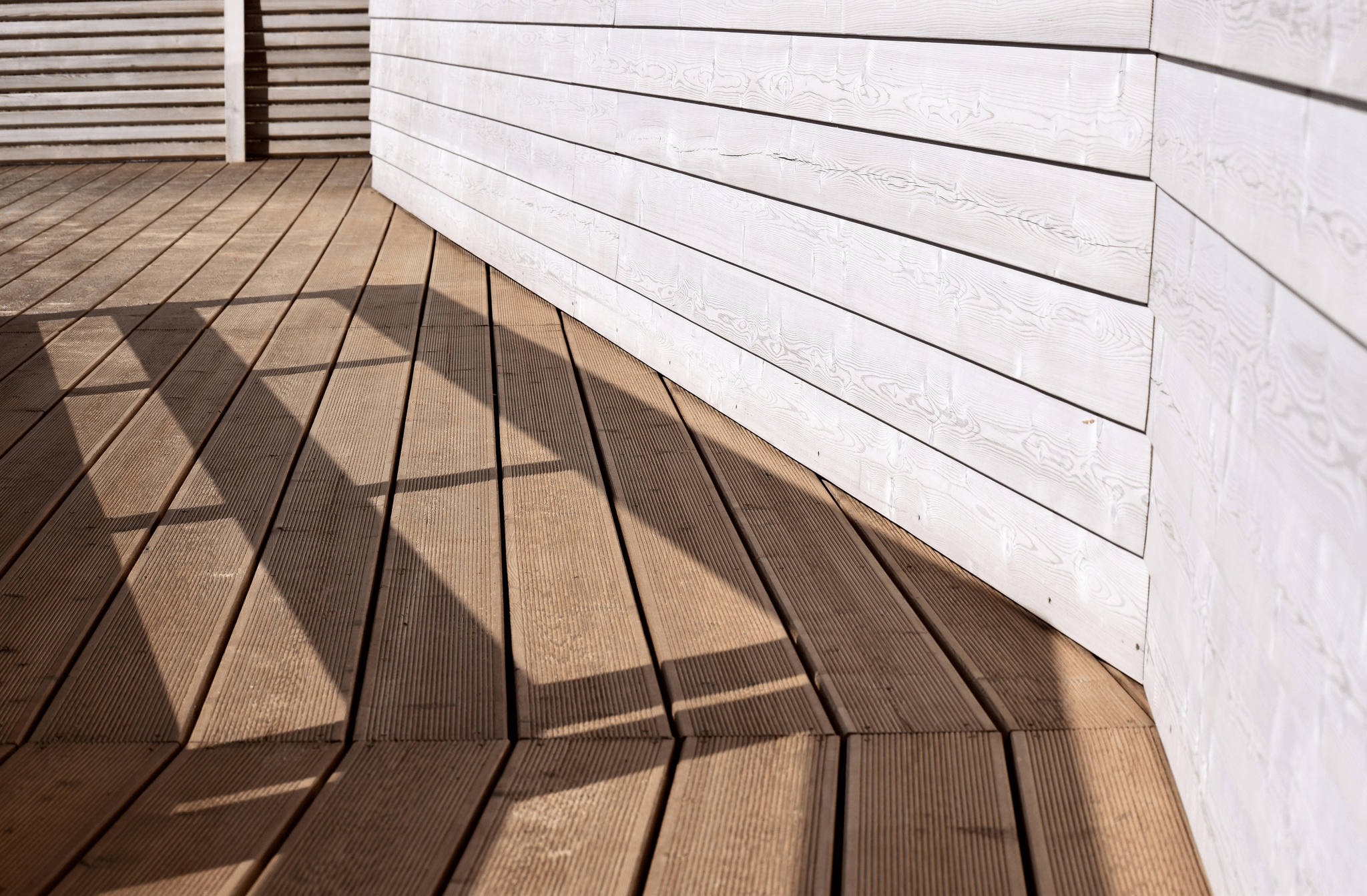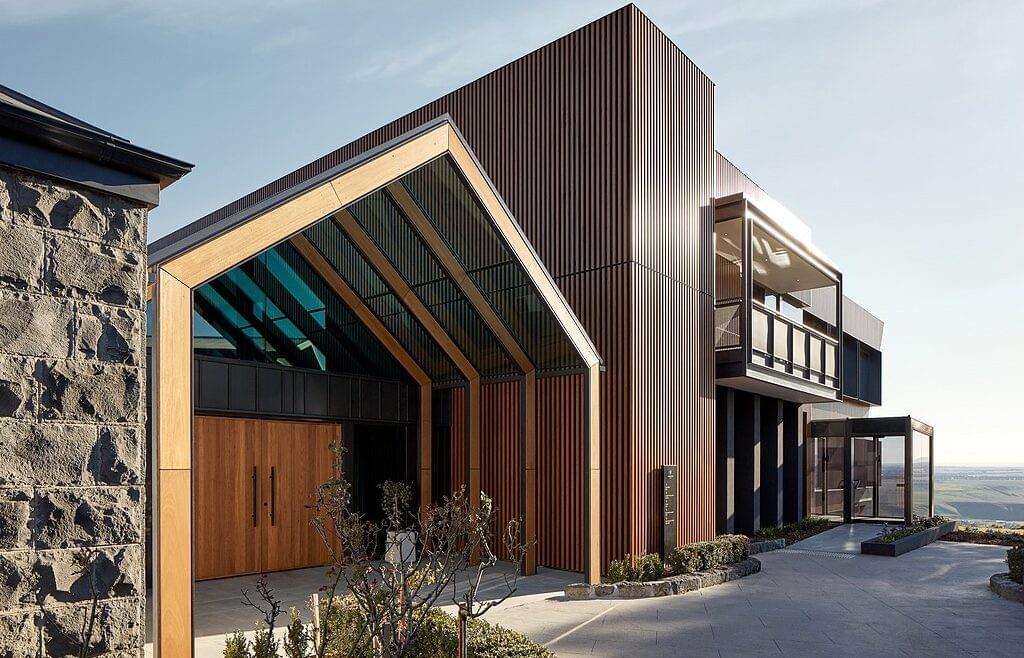Introduction
This innovative material offers a blend of aesthetics and functionality that traditional wood simply can't match. But before diving into the world of composite deck boards, it's essential to weigh the composite decking pros and cons to ensure it aligns with your vision.
Understanding Composite Decking
Composite decking is an engineered product made from a combination of wood fibers and recycled plastic materials, giving it both strength and resilience. Unlike traditional wood, which can warp or splinter over time, composite decking is designed to withstand the elements while maintaining its appearance. This unique composition not only enhances durability but also reduces the need for frequent maintenance, making it an attractive option for many homeowners looking for durable decking solutions.
Why Consider Composite Decking?
One of the primary reasons homeowners are turning to composite decking is its low maintenance requirements compared to traditional wood options. With no need for regular staining or sealing, you can spend more time enjoying your deck rather than maintaining it. Additionally, many brands offer warranties that guarantee performance over several years, providing peace of mind when investing in this type of decking material.
What Are the Key Features?
The key features of composite decking include its resistance to fading, staining, and mold growth—traits that make it stand out in the world of outdoor living spaces. Another significant advantage is its eco-friendly nature; most composite materials incorporate recycled content that helps reduce waste in landfills while promoting sustainability. With various colors and textures available in deck composite decking options, you can create a personalized look that complements your home’s exterior design perfectly.
The Benefits of Composite Decking

Homeowners are increasingly drawn to the composite deck boards due to their unique blend of aesthetics and functionality. Let's explore some of the top benefits that make composite decking a popular choice in outdoor living.
Low Maintenance Requirements
One of the most appealing aspects of composite decking is its low maintenance requirements. Unlike traditional wood decks that need frequent staining, sealing, or painting, composite decking simply requires an occasional wash with soap and water to keep it looking fresh. This means more time enjoying your outdoor space and less time worrying about upkeep—definitely a win-win for busy homeowners!
Long-lasting Durability
Durability is another significant advantage when considering composite decking pros and cons. Composite materials are engineered to withstand harsh weather conditions, resist fading, and endure heavy foot traffic without warping or splintering like wood can. With proper installation, you can expect your deck composite decking to last for decades, making it a wise investment for anyone looking for durable decking solutions.
Eco-friendly Materials
In today's environmentally conscious world, many homeowners are seeking sustainable options for their projects—and that's where eco-friendly materials come into play with composite decking. Made from recycled wood fibers and plastic, these materials help reduce waste while providing a beautiful finish for your outdoor space. Choosing composite deck boards not only enhances your home but also contributes positively to the environment by promoting recycling and sustainability.
The Drawbacks of Composite Decking

While composite decking is often hailed for its many advantages, it’s essential to consider the drawbacks that may affect your decision. Understanding the composite decking pros and cons can help you make an informed choice for your outdoor space. Let’s dive into some key areas where composite decking might fall short.
Initial Cost Considerations
One of the primary concerns when considering composite decking is its initial cost. Compared to traditional wood, deck composite decking can be significantly more expensive upfront, which may deter budget-conscious homeowners. However, it’s worth noting that this higher initial investment often pays off in the long run due to lower maintenance costs and increased durability.
Many people find themselves weighing the benefits against the price tag when evaluating different decking material options. While you might save a few bucks with wood now, think about those ongoing expenses like staining or sealing that can add up over time with traditional materials. Ultimately, understanding these cost considerations is crucial in assessing whether composite deck boards fit within your budget.
Heat Retention Issues
Another drawback of composite decking is its tendency to retain heat more than natural wood. On hot summer days, walking barefoot on a sun-soaked deck can feel like stepping onto a frying pan! This heat retention issue can make outdoor spaces less enjoyable during peak temperatures, particularly if you live in a sunny climate.
If you're planning on using your deck for lounging or entertaining during warm weather, bear this factor in mind when choosing your materials. Some brands offer lighter-colored options that reflect sunlight better than darker shades—something to consider if heat retention is a concern for you! Overall, while composite decking provides durability and low maintenance, its heat retention issues could impact comfort levels.
Potential for Scratches
While durable decking options like composite materials are designed to withstand wear and tear better than wood, they aren’t entirely scratch-proof. Over time, heavy furniture or sharp objects dragged across the surface can leave marks on your beautiful new deck composite decking finish. Although these scratches are generally less noticeable than those found on traditional wood decks, they still pose a concern for some homeowners who value aesthetics.
To mitigate this risk during installation and everyday use of your composite deck boards, consider placing protective pads under furniture legs and avoiding dragging items across the surface whenever possible. Additionally, many manufacturers offer warranties that cover certain types of damage—so be sure to check what protection comes with your chosen product! In summary, while scratches may not detract from overall performance significantly, they are worth considering when weighing the pros and cons of composite decking.
Comparing Composite Decking to Traditional Wood

Both materials have their own unique set of advantages and disadvantages, making the decision a bit tricky. Understanding the cost, lifespan, performance, and aesthetic differences can help you weigh the composite decking pros and cons effectively.
Cost Analysis of Decking Material
The initial investment for composite decking tends to be higher than that of traditional wood. While the upfront costs can give some homeowners pause, it's essential to consider long-term savings on maintenance and replacement costs associated with traditional wood decks. In fact, when you factor in the durability of composite deck boards against weathering and wear, many find that composite decking installation pays off over time.
Lifespan and Performance
Composite decking generally outlasts traditional wood by several years due to its resistance to rot, splintering, and insect damage. While a well-maintained wooden deck may last around 10-15 years, high-quality composite materials can easily provide 25 years or more of service life without significant degradation. This longevity is one reason why many opt for durable decking options like composite—fewer repairs mean more time enjoying your outdoor space.
Aesthetic Differences
Traditional wood boasts a warm, natural appearance that some find hard to replicate with synthetic alternatives; yet modern advancements in composite decking have led to designs that closely mimic real wood grain patterns and colors. Ultimately, your choice might come down to personal preference—whether you lean towards the classic charm of timber or appreciate the sleek sophistication offered by contemporary deck composite decking solutions.
Installation Insights for Composite Decking

With the growing popularity of composite decking, understanding how to properly install this durable decking material is essential for maximizing its benefits. In this section, we’ll delve into best practices, necessary tools, and common pitfalls to avoid during your deck composite decking installation.
Best Practices for Composite Decking Installation
To ensure a successful composite decking installation, begin by preparing a solid foundation; this is crucial as it directly affects the longevity of your deck composite decking. Use a proper framework that allows for adequate drainage and ventilation, which helps prevent moisture buildup that could compromise your composite deck boards over time. Additionally, when laying down the boards, leave sufficient gaps between them to allow for expansion and contraction due to temperature fluctuations—this consideration can help you dodge some of the common composite decking pros and cons.
Another best practice is to follow the manufacturer’s guidelines closely regarding spacing and fastening techniques; each brand may have specific recommendations tailored to their products. Using hidden fasteners not only enhances aesthetics but also minimizes visible screws that can detract from your deck's overall look. Remember that taking your time during installation will pay off in terms of durability and performance—after all, no one wants a wobbly deck!
Tools and Equipment Needed
Before diving into your composite decking installation project, gather all necessary tools and equipment to streamline the process. Essential tools include a power saw (preferably a miter saw), drill/driver with appropriate bits for fastening composite materials, measuring tape for precision cuts, and a level to ensure everything sits evenly. Having these tools on hand will make working with your chosen decking material far more efficient.
Additionally, consider investing in safety gear such as goggles and gloves; while working with composite materials is generally safe compared to traditional wood options, it's always wise to protect yourself from any potential hazards during installation. A chalk line will also come in handy for marking straight lines on larger areas—this small tool can save you from making costly mistakes when cutting or placing your composite deck boards.
Common Mistakes to Avoid
Even seasoned DIYers can fall victim to common mistakes during their composite decking installation journey; awareness is key! One frequent error is neglecting proper spacing between boards—remember that expansion gaps are vital! Failing to account for these spaces can lead to warped or buckled boards over time due to heat retention issues associated with some types of composites.
Another mistake often made involves using inappropriate fasteners or failing to follow manufacturer guidelines regarding screw placement; improper fastening may result in loose boards or even structural failure down the line. Lastly, don’t rush through measuring cuts—accurate measurements are crucial since even minor miscalculations can lead you down an expensive path of wasted materials or unsightly gaps in your new durable decking.
Popular Brands and Products

Each brand offers unique features that cater to different preferences and needs. Let’s take a closer look at some of the most popular options on the market.
Trex: A Leader in Composite Decking
Trex has established itself as a leader in the composite decking industry, renowned for its high-quality deck composite decking solutions. With a diverse range of colors and textures, Trex composite deck boards can mimic the beauty of natural wood without the hassle of maintenance. The brand also emphasizes eco-friendly practices by using recycled materials in its products, making it a top choice for environmentally conscious homeowners weighing the composite decking pros and cons.
Trex's commitment to durability is evident in its extensive warranty offerings, which assure customers of long-lasting performance. Their products are engineered to resist fading, staining, and scratching—issues that often plague traditional wood decking material. This durability means less time spent on repairs or replacements over the years, allowing you to enjoy your outdoor space without worry.
TimberTech: Innovative Options for Deck Composite Decking
TimberTech is another heavyweight contender in the world of composite decking installation, offering innovative solutions tailored to modern outdoor living spaces. Their unique technology allows for enhanced resistance against moisture and mold growth—two common issues with traditional wood decks that can lead to costly repairs down the line. With TimberTech's various product lines featuring rich colors and realistic textures, you can achieve a stunning aesthetic while enjoying all the benefits of durable decking.
One standout feature of TimberTech is their commitment to sustainability; they utilize reclaimed wood fibers and recycled plastics in their products. This not only reduces waste but also contributes positively towards reducing your carbon footprint when choosing composite decking options. Homeowners looking at both aesthetics and environmental impact will find TimberTech's offerings hard to resist when considering their own deck design.
Composite Decking Inc: Quality and Sustainability
Composite Decking Inc focuses on providing high-quality materials that combine performance with eco-friendly principles—making them a fantastic choice for those who prioritize sustainability alongside aesthetics. Their products are designed with longevity in mind; offering excellent resistance against fading, staining, and warping typically associated with conventional wooden decks or even some lower-quality composites available today.
Their commitment extends beyond just producing durable deck boards; they also aim for responsible sourcing practices throughout their supply chain process—ensuring minimal environmental impact while delivering exceptional value to customers weighing the composite decking pros and cons. Additionally, Composite Decking Inc provides extensive resources on proper installation techniques so you can get your project off on the right foot without running into common pitfalls often faced during composite decking installation.
Conclusion
Composite decking offers a blend of aesthetics and functionality, but like any product, it has its drawbacks. Weighing these factors will help you make an informed decision that aligns with your needs and lifestyle.
Weighing Composite Decking Pros and Cons
Composite decking boasts numerous benefits, including low maintenance requirements and long-lasting durability. However, potential buyers should also consider initial cost implications and heat retention issues associated with composite deck boards. By carefully evaluating these composite decking pros and cons, homeowners can determine if this option fits their budget and expectations for outdoor living spaces.
Making the Right Choice for Your Home
Choosing the right decking material is not just about aesthetics; it’s also about functionality and longevity. If you prioritize durability over initial costs, then investing in composite decking may be your best bet. On the other hand, if you're looking for a more traditional look or lower upfront costs, exploring wood options could be worthwhile before committing to composite decking installation.
Final Thoughts on Durable Decking Options
In conclusion, durable decking solutions like composite decking offer significant advantages that can enhance your outdoor experience while minimizing upkeep. While there are valid concerns regarding cost and performance compared to traditional wood options, the overall benefits often outweigh these drawbacks for many homeowners. Ultimately, understanding both sides of the equation will empower you to select a deck composite decking solution that meets your unique needs.
